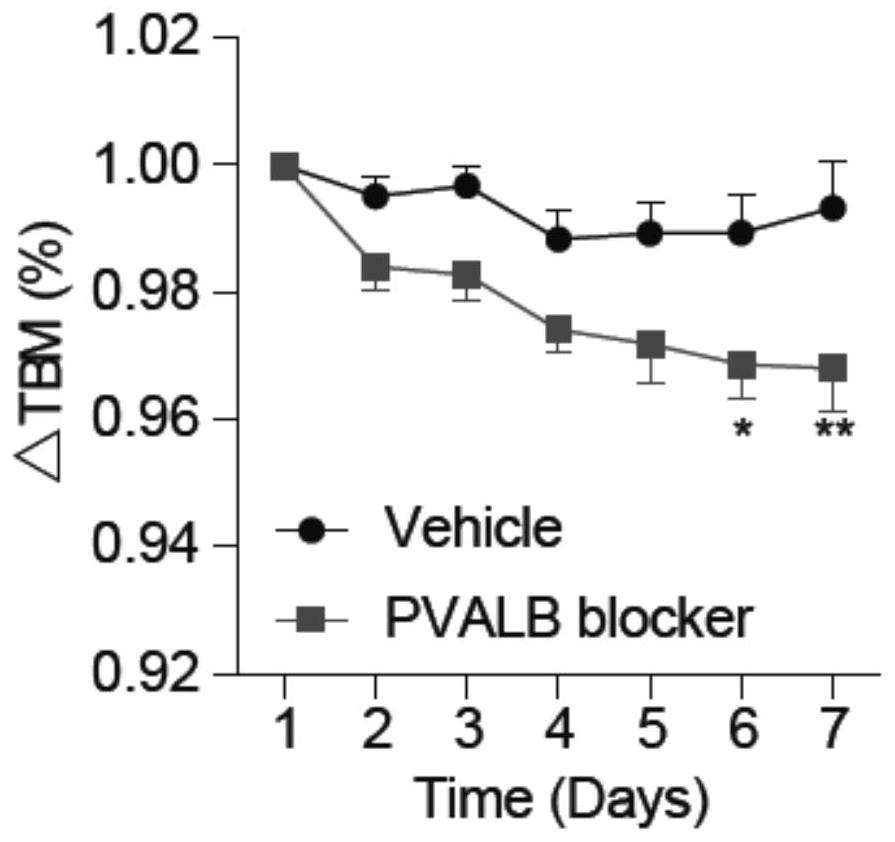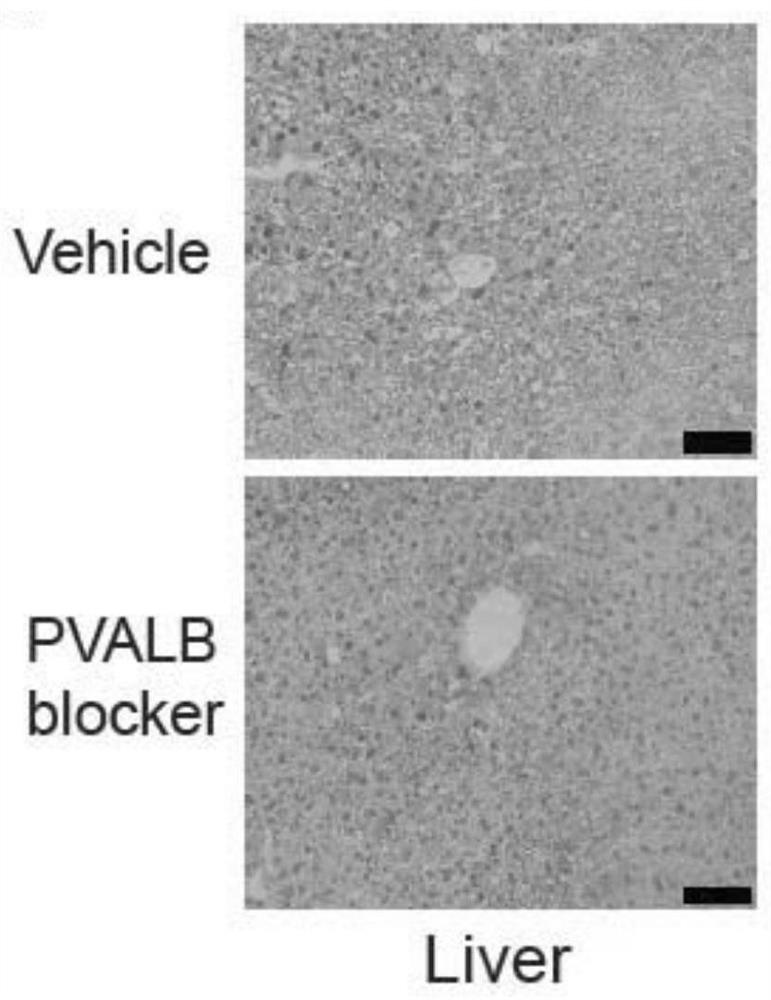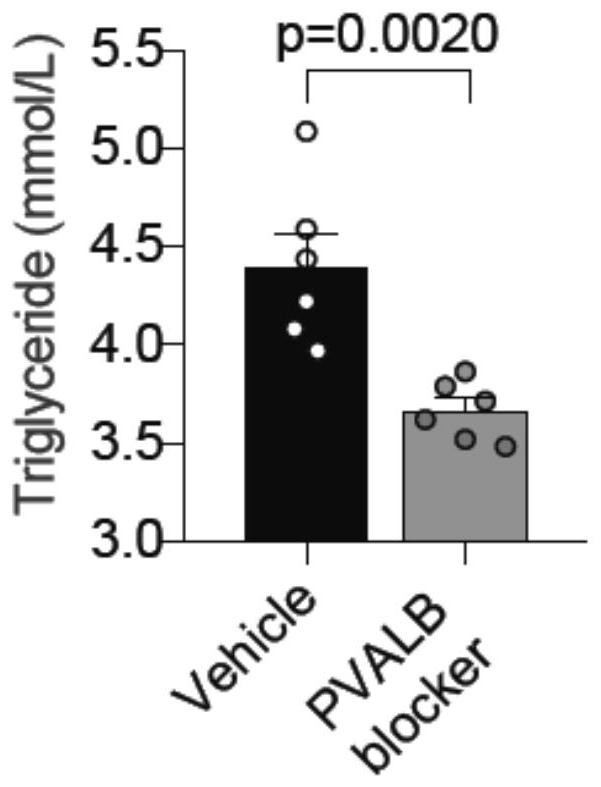Application of inhibitor of parvalbumin in preparation of product for preventing and treating obesity and diseases caused by obesity
A parvalbumin and inhibitor technology, applied in the field of medicine, can solve the problems of large molecular weight, difficult synthesis, poor stability, etc., and achieve the effect of improving insulin resistance
- Summary
- Abstract
- Description
- Claims
- Application Information
AI Technical Summary
Problems solved by technology
Method used
Image
Examples
Embodiment 1
[0056] Example 1 Establishment of mouse obesity model and body weight change after polypeptide injection
[0057] Establishment of the mouse obesity model: the obesity model was established by feeding the mice a diet containing 60% high-fat for 12 weeks. After the model is established successfully, follow-up body weight detection and examples are carried out.
[0058] The mice were injected once a day with 5 mg / kg of polypeptide or normal saline as a control, and the body weight of the mice was weighed. The result is as figure 1 As shown, the body weight of mice decreased significantly.
Embodiment 2
[0059] Embodiment 2 detects the situation of mouse fatty liver
[0060] Seven days after the injection of the polypeptide, the mouse liver was taken for paraffin section, and the condition of fatty liver was observed by oil red staining.
[0061] Materials: Mice were killed by cervical dislocation, the abdominal cavity was opened, and liver tissue (or adipose tissue) was cut. The cut tissue block should not be too large to allow the fixative to penetrate, usually 5mm×5mm×2mm or 10mm×10mm×2mm is appropriate. Remove the required liver tissue and cut it into a small piece with a thickness of 2-3 mm.
[0062] Fixation: Wash the cut tissue with normal saline, put it into Carnot's fixative immediately and fix it for 30-50 minutes.
[0063] Washing: After the material is fixed, wash it with 50%-70% ethanol.
[0064] Dehydration: 30%, 50%, 70%, 80%, and 90% ethanol solutions at different levels were dehydrated for 40 minutes each, and put in 95%, 100% ethanol solutions on both side...
Embodiment 3
[0097] Example 3 Detection of Insulin and Triglyceride Levels
[0098] Seven days after the injection of the polypeptide, the mice were killed and the serum of the mice was taken to detect the levels of insulin and triglycerides by enzyme-linked immunosorbent assay (ELISA for short). The ELISA experimental steps are as follows:
[0099] 1. Coating process:
[0100] Dilute the antigen used with coating diluent to an appropriate concentration (generally, the amount of antigen coating required is 20-200 μg per well), add 100 μl of antigen to each well, place at 37°C for 4h, or 4°C for 24h; discard the well Liquid. (To avoid evaporation, plates should be covered or placed flat in a metal wet box with wet gauze on the bottom)
[0101] 2 Seal the enzyme-labeled reaction well:
[0102] Place 5% calf serum at 37°C for 40 min. When blocking, fill the reaction wells with blocking solution and remove the air bubbles in each well. After sealing, wash the wells with washing solution for ...
PUM
 Login to View More
Login to View More Abstract
Description
Claims
Application Information
 Login to View More
Login to View More - Generate Ideas
- Intellectual Property
- Life Sciences
- Materials
- Tech Scout
- Unparalleled Data Quality
- Higher Quality Content
- 60% Fewer Hallucinations
Browse by: Latest US Patents, China's latest patents, Technical Efficacy Thesaurus, Application Domain, Technology Topic, Popular Technical Reports.
© 2025 PatSnap. All rights reserved.Legal|Privacy policy|Modern Slavery Act Transparency Statement|Sitemap|About US| Contact US: help@patsnap.com



